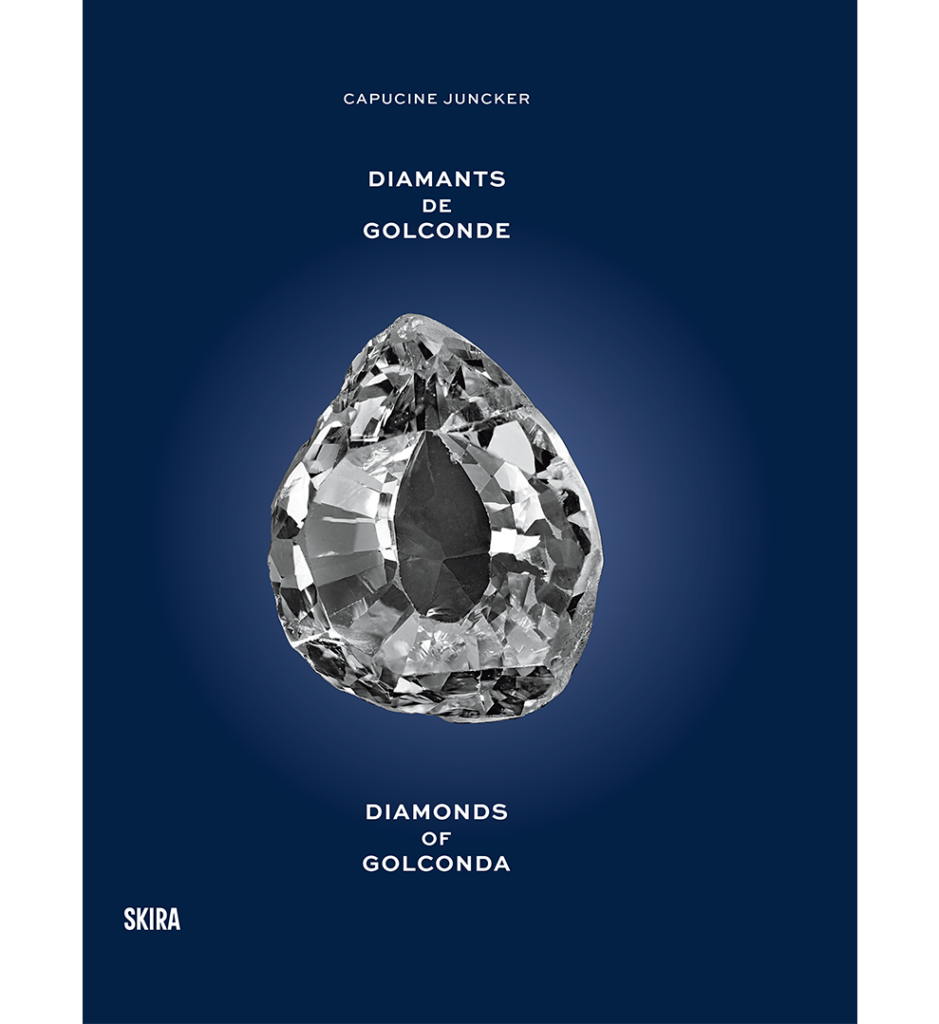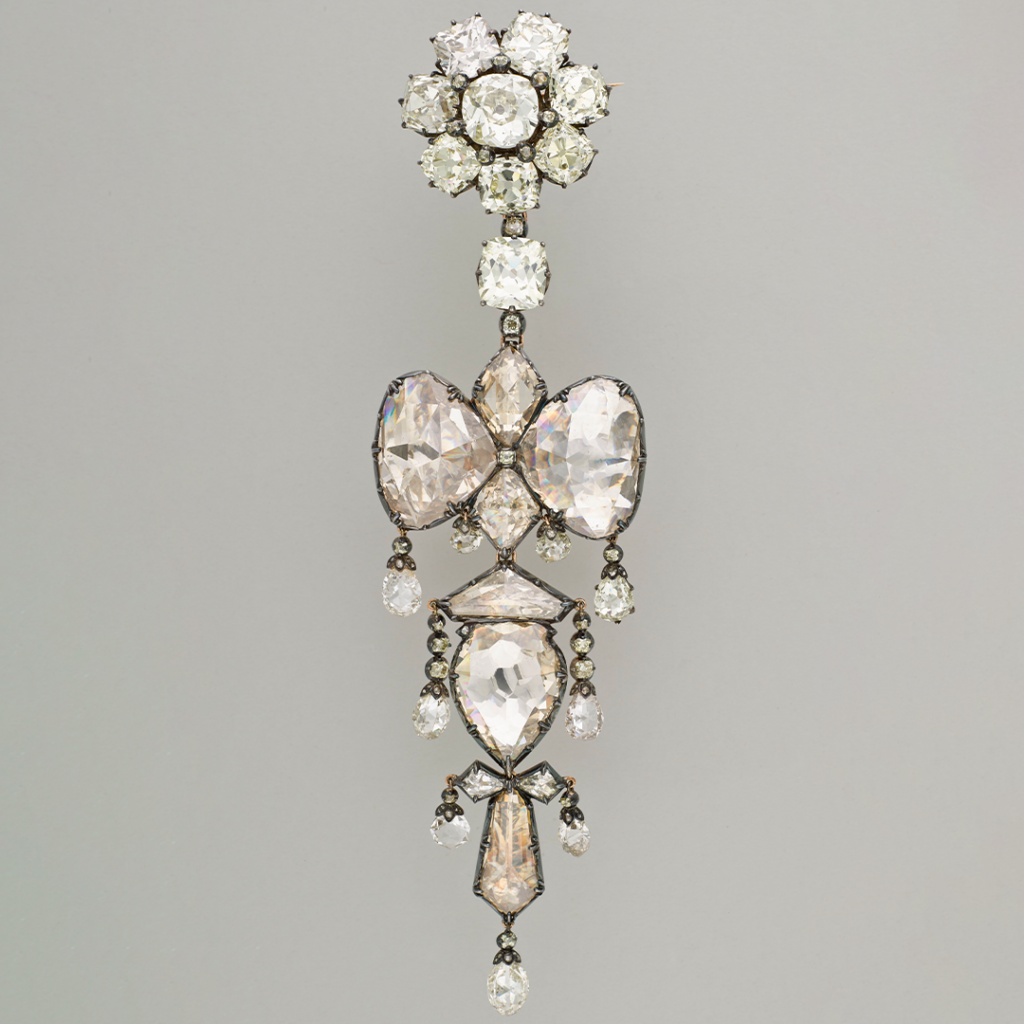Through the centuries some of the world’s most famous diamonds have been traced back to the Golconda Mines of India. In her book “Diamonds of Golconda”, published by SKIRA, author Capucine Juncker explores the history and lore around the mine and the gems that came from the legendary mines. A former public relations specialist in “art de vivre” and luxury, Juncker a gemologist and historian, created the website “Property of a Lady” where she dives into jewelry history, creators and the overall market. Juncker studied history and earned a Master’s Degree in philosophy from the Sorbonne University and she also holds a diploma in gemology from the Institut National de Gemmologie and a “Diamond Essential” certificate from the De Beers Diamond Institute. After completing those studies, she then made the decision to focus on historic jewelry, writing for magazines and auction catalogs as well as authoring numerous books on the topic. Juncker has lived in Rome, London and Dubai and currently resides in Riyadh, Saudi Arabia. Living in different cities inspired Juncker to focus on the international aspect of jewelry history and cultural exchanges. After years of research, “Diamonds of Golconda” was born. We spoke with Juncker about researching and writing “Diamonds of Golconda”.
What inspired you to write a book about Golconda diamonds?

I had been researching ancient diamonds from India for a long time, but always from a narrow prism: The Diamants de la Couronne de France (a collection founded in June 1530 by Francois I), Mughal jewelry and the Mughal Empire founded by Babur in 1526, as well as record-breaking historic diamonds at auction.
I realized that these various views formed a common thread running through the entire history of jewelry and I wanted to draw upon that thread. I also realized that the usual research on Golconda diamonds contained a number of inaccuracies because diamonds that were not from India were often called Golconda. Golconda diamonds have such an exceptional history and are so ancient that they have become a myth! The prestige of these diamonds has blurred their origin, as well as their historic and geographic background.
When SKIRA contacted me, I decided to go back to the origins of the diamonds and treat the subject in a cross-disciplinary way. The book is an historical account that traces the genealogy of diamonds, mined in India’s Deccan region, between antiquity and the 18th century, with a major peak in activity during the 17th century. If the Hindus, then the Sultans of the Deccan and Mughal emperors had not made diamonds the ultimate symbol of power, Europeans may not have been so interested in them.
This book is meant for those who love diamonds, but it is also for readers who are interested in history with a particular focus on international relations, both diplomatic and commercial, between India and the rest of the world. “Diamonds of Golconda” is in two parts, with an historical essay entitled “An Indian History” and an anthology devoted to the globalization of Indian diamonds. A final section devoted to contemporary jewelry using Golconda diamonds brings the book to a close.
What was the most surprising piece of information that you found out while researching the book?

While we all have an image of emperors dripping with jewels, I was surprised to discover during my iconographic research into Mughal miniatures that diamonds were very rarely depicted on portraits, but mainly on regalia — throne, crown, parasol, fly swatter, etc., weapons such as daggers, handles and sword pommels as well as horse and elephant mounts – harnesses and saddles, along with crockery, and other decorative items.
Diamonds were not part of the culture of the conquerors from Central Asia. For them, the red spinels of Badakhshan were the dynastic gems par excellence and symbols of power. Pearls, followed by emeralds that had been recently imported from Colombia, were the next most important jewels. It wasn’t until the reign of Jahangir (ruled 1605-1627), which coincided with the boom in mining in the Deccan, that diamonds, the most prized gems among Hindus since antiquity, became a full part of imperial culture and were elevated to the pantheon of the most sought after gem.
How rare is it to find a diamond from the Golconda Mines today?

The mines were exhausted over two centuries ago. Golconda diamonds are extremely rare, hence the myth and aura that surrounds them. Occasionally, during the rainy season “the miracle of the monsoon” occurs. The dry, arid land disintegrates revealing a few rare diamonds. This phenomenon leads farmers to rush to certain sites, such as Kurnool and Vajrakarur in the state of Andhra Pradesh in hopes of finding a diamond.
Golconda diamonds are rare in absolute terms and we must be extremely cautious when using this term. Diamonds are made of carbon so their geographic origin cannot be determined scientifically. The discovery of diamond mines in Brazil around 1725 put an end to the monopoly of Indian diamonds. If we want to be strict, Golconda diamonds and Indian precious objects set with Golconda diamonds should be recognized as such only if their history and the genealogy of the successive owners are officially traced.
Did you visit the area of Hyderabad where the Golconda Mines were located and how did it influence what you wrote?

I visited the bustling city of Hyderabad. I walked around and admired the majestic ruins of the Golconda Fort and wandered around the sublime tombs of the Qutb Shahi sultans. My trip to the state of Telangana was the first step towards writing “Diamonds of Golconda”, which opens with a description of the ramparts of the citadel by Pierre Loti that I love so much.
My extensive reading of 17th century travel literature added to my empirical knowledge and helped me to imagine Golconda in its heyday. One author in particular has been a major influence on my work: Jean Thevenot (1633-1667). Thevenot was a French traveler who crossed India from Surat to Masulipatam between 1665 and 1667. His account is packed with information on Hyderabad, the fortress of Golconda and the rarely seen court jewelers during the time of Sultan Abdullah Qutb Shah (1626-1672).
Today we view diamonds as beautiful gems to adorn ourselves, but historically diamonds, many from Golconda, have held deeper meaning – symbols of power, sovereignty – could you talk about the culture of diamonds prior to the 20th Century and how they were used in ways that were more than just adornment?
Diamonds have great symbolic value in India. Ancient Hindu lapidaries have shown that as early as the 6th century BC, a “science” of “gem appreciation” had developed and was compiled in a technical treatise: Ratanpariksa. This document was used by jewelers and merchants and was also intended to educate future sovereigns, whose ability to judge precious stones was an integral part of royal prestige.
For Hindus, diamonds have a metaphysical, religious and cosmological dimension – they are associated with Venus. Depending upon the shape of the rough diamond and its optical qualities, diamonds were imbued with a thousand beneficial or harmful virtues. For example, kings had to wear diamonds that were perfect in every way if they wanted a successful reign.
For a very long time, diamonds were one of India’s major trading resources. Since diamonds were found nowhere else in the world, they were a commodity that was unique to the subcontinent. Their value enabled political regimes to build up a treasure trove for trade, fueling regional and international exchange, as well as boosting the owner’s prestige. Jewelry was a symbol of that prestige and that is why there is a close association between diamonds, political and economic power.
Simultaneously, the idea of pageantry emerged very early in India. The Russian merchant Athanasius Nikitin (1433-1472), was one of the first Europeans to travel to India between 1469 and 1472, when most of the Deccan was ruled by the Muslim Bahmani dynasty (1347-1518). He described the extreme opulence of the court of Bidar: “The sultan, riding on a golden saddle, wears a habit embroidered with sapphires, and on his pointed headdress a large diamond; he also carries a suit of gold armor inlaid with sapphires, and three swords mounted in gold.”
Top of Page: Capucine Juncker
Authored by Amber Michelle
